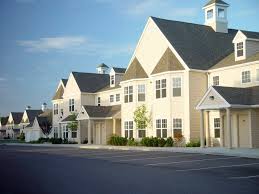Multi-generational living is on the rise, and it’s not just about saving money. It’s about staying connected. Whether it’s elderly parents moving in, adult children staying longer, or families pooling resources, more households are blending generations under one roof. Designing a home to support that lifestyle requires more than just an extra bedroom. From layout to privacy and shared spaces, thoughtful planning ensures everyone feels comfortable and independent. If you’re building a new home with multiple generations in mind, here are some important considerations that can make daily life smoother and more enjoyable for everyone involved.
Prioritize Separate Zones for Privacy
One of the keys to successful multi-generational living is respecting everyone’s need for space. Ideally, design your floor plan to include distinct zones, such as a separate suite with its own bathroom and entrance. This allows grandparents or adult children to maintain a sense of autonomy while still being part of the household. Even within shared spaces, visual separation like sliding doors or partial walls can reduce noise and improve comfort. When possible, allocate one quiet area on each floor, so members of different ages and routines can coexist without clashing schedules or lifestyles.
Make the Home Easily Accessible
Accessibility isn’t just for seniors. It benefits everyone in the home. Wide hallways, step-free entrances, and barrier-free bathrooms make a house easier to navigate for young children, aging adults, or anyone recovering from an injury. In some multi-level builds, families go a step further by including a residential lift as a long-term solution for vertical mobility. It’s a smart investment that allows family members to age in place, and it ensures all floors remain functional regardless of future health or mobility changes. Accessibility features quietly improve convenience without sacrificing design aesthetics.
Plan for Shared and Private Kitchens
One of the trickiest parts of living together is sharing a kitchen. Decide early if your home will have one central kitchen or separate ones for each generation. A kitchenette in a basement or in-law suite allows for more independence and fewer traffic jams during meal prep. If you’re sticking with one kitchen, consider two sinks, double ovens, or a large island with ample counter space to reduce congestion. Keep cabinets, tools, and pantry zones labeled and organized. Thoughtful layout planning here prevents future conflict and streamlines everyday routines.
Integrate Smart Storage Throughout the Home
When several people share a home, clutter builds up quickly. Integrated storage solutions, like under-stair drawers, walk-in pantries, and built-in cabinetry, help manage the volume of items without compromising space. Each family member should have their own designated areas for clothes, hobby supplies, and personal items. In common areas like entryways and laundry rooms, make storage zones visible and easy to access. A well-organized home reduces tension and gives everyone a clearer sense of ownership. Smart storage isn’t just about neatness. It directly supports a functional, harmonious household.
Plan Utilities and Infrastructure for Multiple Users
Your home’s systems should be designed to handle higher demand. That means planning for more electrical outlets, stronger Wi-Fi, multiple water heaters, and maybe even separate HVAC zones. A single thermostat likely won’t satisfy both a newborn’s nursery and an older adult’s bedroom. Similarly, upgrading to higher-capacity washers, dryers, and refrigerators can help everyone share resources without friction. Don’t forget about soundproofing, especially between floors or between bedrooms and living areas. These “invisible” choices make a major difference in daily life and prevent issues before they start.





Leave a Reply